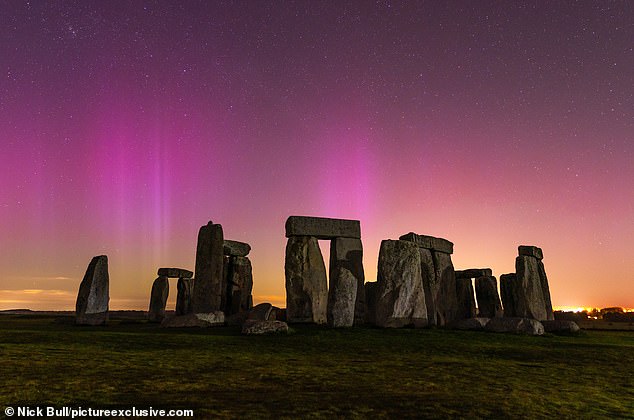
Met Office Aurora Alert: Solar Storm to Illuminate UK Skies Tonight—Check Your Hometown Visibility
Northern Lights Illuminate UK Skies: How to Catch the Spectacle
[Image: Northern Lights over Stonehenge earlier this year]
The Northern Lights, a dazzling natural phenomenon typically associated with the Arctic, could light up skies across the UK tonight. Thanks to a solar storm, auroras may be visible as far south as northern England, offering a rare opportunity for stargazers without the need to travel abroad.
Why Is This Happening?
A Coronal Mass Ejection (CME)—a massive burst of solar particles and magnetic fields—has collided with Earth’s atmosphere, triggering a moderate (G2) geomagnetic storm. This interaction energizes particles in our atmosphere, creating the vibrant colors of the aurora. The Met Office predicts the lights will be most vivid over Scotland, Northern Ireland, and possibly northern England, including cities like Manchester and Leeds.
Best Viewing Tips
- Timing: With the summer solstice approaching, darkness falls late. Aim for midnight when skies are darkest.
- Location: Escape light pollution. Rural areas or elevated spots with clear northern horizons are ideal.
- Cameras Help: Smartphones or digital cameras can capture colors often invisible to the naked eye. Use long exposures for vivid results.
[Image: Aurora over Whitley Bay in March, showing smartphone-captured hues]
Weather Warnings
While the celestial show is enticing, the Met Office has issued yellow thunderstorm alerts for northern England and Scotland. Heavy rain and clouds might obstruct views, so check local forecasts before venturing out. Zoe Hutin, a Met Office spokesperson, advises limiting time outdoors due to storm risks.
More Chances Ahead
Missed tonight? Another geomagnetic storm is forecast for Saturday, driven by a “coronal hole” on the Sun—a region spewing high-speed solar wind. These events are more frequent during the solar maximum, a peak in the Sun’s 11-year activity cycle. During this phase, solar flares and CMEs intensify, boosting auroral displays.
[Image: Sun’s coronal hole, source of upcoming solar winds]
The Science Behind the Lights
Auroras occur when charged solar particles collide with Earth’s magnetic field, channeling toward the poles and interacting with atmospheric gases. This collision emits light—green from oxygen, red/purple from nitrogen. The current solar maximum, lasting through 2025, promises more frequent and intense displays.
[Image: Diagram of the solar cycle and aurora formation]
Final Tips from Experts
- Royal Greenwich Observatory’s Dr. Edward Bloomer suggests letting your eyes adjust to darkness for 30 minutes.
- Avoid smartphones during viewing—their light reduces night vision.
Whether you glimpse the aurora tonight or catch future displays, this celestial marvel reminds us of our planet’s connection to the Sun’s dynamic forces. Keep an eye on the skies—and the weather app!
[Image: Satellite view of UK cloud cover vs. aurora visibility zones]
The solar maximum ensures more opportunities ahead—stay patient, prepared, and awestruck.


